Discrimination, disrespect, machism, unequal opportunities, and racism are unacceptable in a company that proclaims values of diversity and inclusion. However, we know that there are still gaps between positioning marketing and cultural transformation.
An era of significant change
We are immersed in a time of major changes, not only the ones derived from the COVID-19 pandemic but also social and cultural changes globally.
These transformations, which have been taking shape in different countries over the last few years, range from anti-discrimination and gender-sensitive policies and actions, inclusive language, and the empowerment of minorities and groups that have been historically invisible.

We understand the diversity as those unique characteristics that make us who we are: ethnicity, age, culture, personality, lifestyle, work experience, abilities, gender, sexual orientation. Hence, inclusion means respecting, valuing, and considering all peoples’ different styles, perspectives, and needs.
Diversity and Inclusion: a transversal axis in companies
The most innovative organizations have realized the change of era and began to include a transversal axis of Diversity and Inclusion, which could respond to these issues within the company and additionally constitute a foundational pillar in the cultural transformation.

On the other hand, the demands of consumers who are increasingly involved in these matters are putting pressure on brands. However, some organizations use Diversity Washing (similar to Green Washing) to generate a positioning and brand image linked to diversity, and inclusion can be as counterproductive – in terms of public opinion – as if they had not carried out any campaign or action at all.
A concrete example of Diversity Washing is when a company hires members of minority groups in roles that have no actual function to generate (false) trust in the communities where it operates.
- Moving towards diverse and inclusive organizations requires learning, courage, consistency and conviction.
Numbers that set a trend
According to Deloitte latest report, from January 2021, organizations that manage diversity and inclusion achieve in their teams:
- A 17% increase in performance
- 20% more creative and innovative ideas.
- Improved business results x 8 and become six times more agile.
This study is aligned with McKinsey’s article “Diversity Still Matters,” published in May 2020, which states that “diverse teams are more innovative, stronger at anticipating changes in consumer needs and consumption patterns that make new products and services possible, potentially generating a competitive advantage.”
However, this article warns about how diverse talent within organizations could be at risk because of the current precarious work context due to COVID-19.
Still, it is also advised that diversity and inclusion can be one of the doors out of the crisis: “when companies invest in diversity and inclusion, they are in a better position to create more adaptable and effective teams and are more likely to recognize diversity as a competitive advantage.”

Talent to drive change
Marcela Ospina, partner and co-founder of Wise Work, recommends: “conducting an analysis to identify strengths, opportunities, and areas for improvement in existing diversity and inclusion initiatives. This data will help set goals. If we move towards designing a new internal policy and a cultural transformation, this will require talent to drive change from experience, commitment, and knowledge.”
She concludes by explaining that , “having a strategic plan that incorporates success indicators, linked to business objectives and constant measurement, is also key. An honest, transparent, empathetic communication that places people’s interests at the center throughout the change process will be the best ally”.
There is no more time to waste. This transformation requires courage, coherence, knowledge, and conviction. Diversity and inclusion are not a fad, and they are not a trend; they are an imperative necessity to sustain in increasingly aware and demanding markets and societies.
Do you have questions?
your internal and institutional communication.
Contact Us




